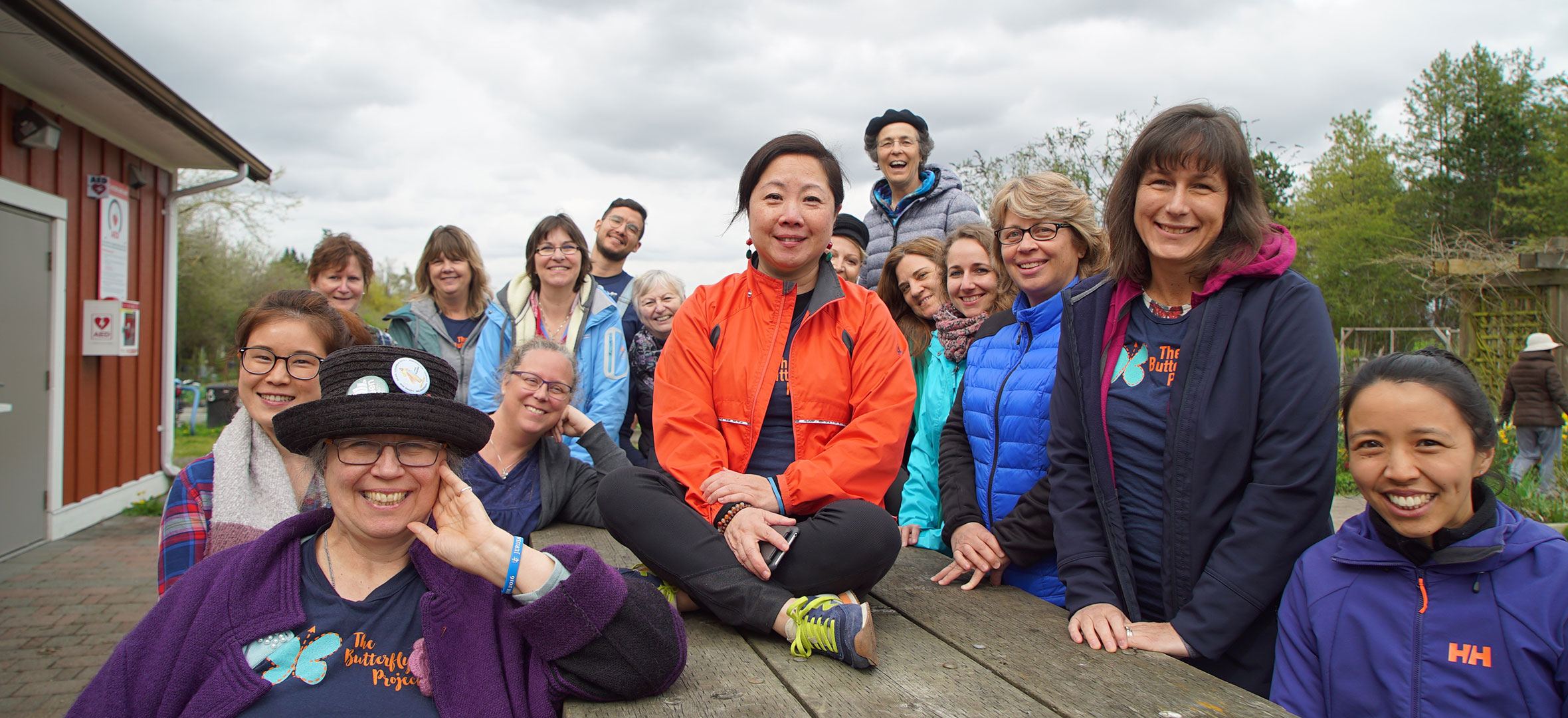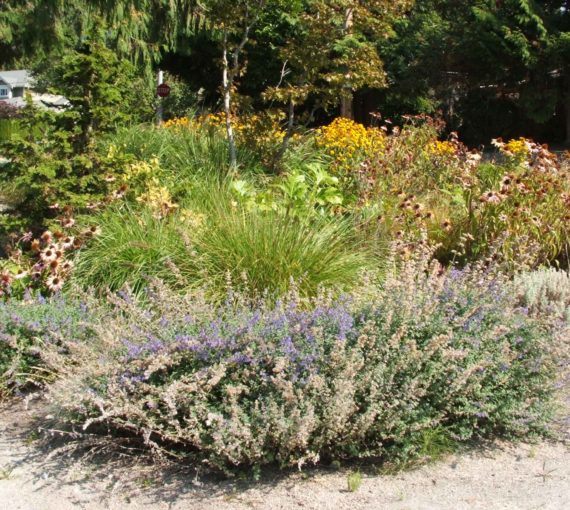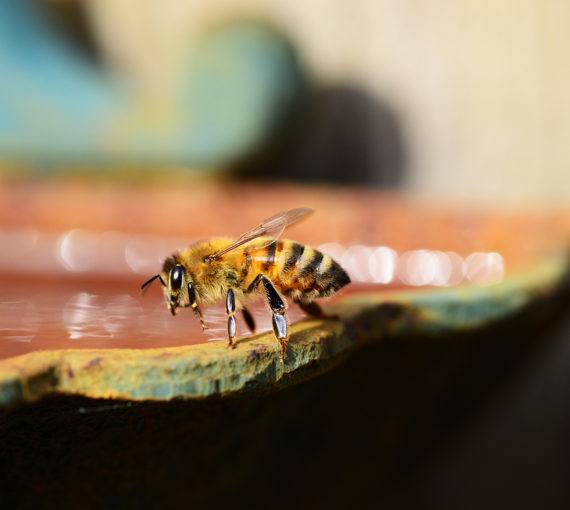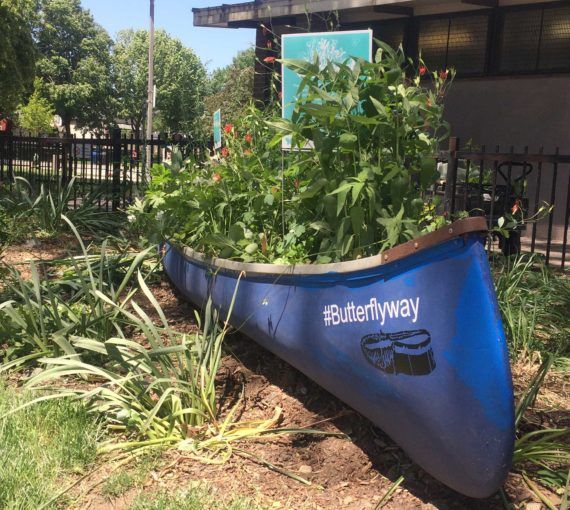
Richmond Butterflyway Rangers.
The David Suzuki Foundation’s Butterflyway Project is making its mark for being an innovative, impactful, and fun way to help Canada’s butterfly population, one habitat—and one ordinary citizen—at a time. Are you next?
Caring for little critters
You don’t have to be an insect lover to appreciate the vital importance of wild bees and butterflies to our ecosystem. Due to their pollination superpowers, it’s said that bees are responsible for one out of every three bites of food we eat. Our beautiful and beloved butterflies are no environmental slouches either—they’re invaluable in helping to support ecosystems through pollination and pest control.
However, as Jode Roberts, manager of the Butterflyway Project, explains, “Insects like wild bees and butterflies are in trouble. It is estimated that insect populations have declined worldwide by 45 percent in the past 40 years.”
Why? There are many factors at play, according to Roberts, including “industrial-scale agriculture and profligate pesticide use to extreme weather and loss of natural spaces in our communities.” It comes down to the fact that we’re absentmindedly destroying the vital habitats that butterflies and bees need to eat, reproduce, and do their important work.
Butterflyways to the rescue
“The good news is that we can all help bring bees and butterflies back,” says Roberts. “The Butterflyway Project is a citizen-led effort to create butterfly corridors through neighbourhoods across the country, one fun planting at a time.”
Essentially, Butterflyways are pockets of land created to nurture our pollinator friends, complete with the right plants, shelter, and a source of water. “Creating butterfly-friendly gardens in our neighbourhoods provides both an opportunity to connect us with nature nearby and creates much needed space for local critters,” says Roberts.

DIY butterfly habitat
Want to welcome butterflies and wild bees to your own backyard? The David Suzuki Foundation offers these tips.
- Plant native wildflowers (ask your local garden centre for suggestions).
- Grow a native shrub or tree, which offers habitat as well as nectar.
- Collect a pile of fallen branches, stems, and rotting wood as a “woodpile bug hotel.”
- Rather than growing grass all over your lawn, leave some patches of dirt alone as habitat for burrowing bees.
- Include a shallow dish with fresh water in it. Add flat stones on the bottom so bees and butterflies have a place to land and drink.
A citizen-led approach
Supporting butterflies and bees through habitat building is intriguing, but it’s DSF’s unique, citizen-led approach that makes it so innovative and captivating. As Roberts explains, “The goal of the project is to empower our volunteers (which we call Butterflyway Rangers) to connect with neighbours and local groups, businesses, and institutions and establish at least a dozen patches of butterfly-friendly wildflowers in each neighbourhood.”
The great thing about the project is that anyone can get involved—with wonderfully unexpected consequences. “Having residents lead planting projects in their neighbourhoods connects them to local businesses, groups, and neighbours,” explains Roberts. “This cross-pollination within a community is really important, and I’ve found it often results in fun, unexpected things, like hosting musical butterfly-themed parades and schools using old, retired canoes as playful planters for native wildflowers.”

The buzz on bees
What’s the difference between honeybees and wild bees? As Jode Roberts, manager of the Butterflyway Project explains, honeybees are “a single species of honey-producing bee from Europe that is managed like livestock.”
However, says Roberts, “There are hundreds of species of bee in every Canadian city, and none live in hives and produce honey. Yet these wild bees, like bumblebees, mining, and carpenter bees, are also important pollinators, which are responsible for ensuring most flowers and fruit are pollinated.”

In the words of a Ranger
Aidan Dahlin Nolan is one of DSF’s Butterflyway Rangers. He came up with the clever and fun idea of using old canoes as pollinator-friendly planters in parks and schools.
“The training and support DSF provided has inspired me to grow a somewhat unconventional intervention into a city-wide project,” he explains. “It also provided a network of support through my fellow Rangers, who have helped along the way and become great friends and co-conspirators. I’m excited to see what magic the Butterflyway Project can conjure in neighbourhoods across the country.”
His flower-filled canoes are an example of how a simple idea can really blossom!
You can make a difference
Not sure if you can make a difference? You absolutely can, asserts Roberts: “Even the simplest of initial actions can build toward something greater, and perhaps unexpectedly awesome.”
The Butterflyway Project is enjoying huge successes and flourishing across the country. “In our first year, Rangers were able to plant thousands of wildflowers in five communities and established five neighbourhood Butterflyways,” says Roberts.
This article was originally published in Alive and has been reprinted with permission. Read the article.

Leah Payne
Leah Payne is a freelance writer and editor, and the founder of Cedar Hill Creative, a B.C.-based boutique communications company. Leah specializes in writing about natural health; beauty, hair care, and skin care (with a focus on natural and environmentally friendly products and practices); holistic, complementary, and alternative wellness; and health foods and artisan foods.


